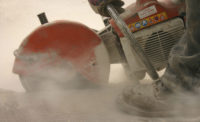A Monroe, Wisconsin medical clinic failed to inform maintenance workers that they were being sent into areas containing asbestos – which the company had known about since 2008. The company also failed to provide the workers with equipment which could have protected them from asbestos hazards.
That’s what OSHA determined when it investigated conditions at The Monroe Clinic.
Investigators found maintenance employees had disturbed asbestos while conducting maintenance tasks, repairs and installation and removal of materials as they worked on the boiler and in crawl spaces, near ceiling tiles and in other areas where asbestos containing materials had been identified.
Penalties
The agency has cited the clinic with one willful and 11 serious safety and health violations after its June inspection of the facility. The Monroe Clinic faces $261,890 in proposed penalties.
"Monroe Clinic knew its employees were working amid materials known to contain asbestos, and failed to inform them of the location of hazards and to protect them from exposure to a known carcinogen that can cause life-long health issues and possibly death," said Ann Grevenkamp, OSHA's area director in Madison.
Why asbestos is dangerous
Asbestos exposure occurs when workers cut, damage or otherwise disturb asbestos-containing building materials including contact with materials that are deteriorating, releasing asbestos fibers that can be inhaled without proper protection. Asbestos can cause lung disease and mesothelioma, a cancer of the lining of the lung or stomach that is nearly always fatal. Asbestos fibers also remain on clothing and transfer to other surfaces such as upholstery and carpets, creating a danger of secondary exposure for others.
The citations
In its citations, OSHA alleges that Monroe Clinic failed to:
- Provide basic personal protective equipment such as protective clothing.
- Create a decontamination area for employees to remove protective clothing before leaving the worksite.
- Use appropriate work methods to minimize asbestos exposure, such as using wet methods to keep asbestos fibers from becoming airborne and using local exhaust ventilation.
- Provide respiratory protection.
- Conduct exposure assessments.
- Provide medical surveillance to monitor potential exposure.
- Post signage on the boiler room and in other locations warning of known asbestos containing material.
Inform workers on the location and use of hazardous chemicals in the facility.






